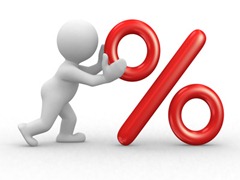 Interest rates vary depending on the bank, the economy and the different type of accounts, including money market fund rates. While interest rates on money market accounts can be around zero, they never actually fall below zero. Money market fund rates can fall below zero, causing a negative return on your money.
Interest rates vary depending on the bank, the economy and the different type of accounts, including money market fund rates. While interest rates on money market accounts can be around zero, they never actually fall below zero. Money market fund rates can fall below zero, causing a negative return on your money.
Money Market Funds vs. Money Market Accounts
There are many different accounts available to invest your extra money. Investing in stocks can be scary for some and a less risky option would be a money market fund. With a money market fund, you invest your money with a broker, who uses your money to invest in big corporations, to buy bonds, or for other short term investments. As long as the business does well, you make money. But, since even the top money market funds aren’t FDIC insured, if the corporation were to fail, you would lose your money. Money market accounts are invested with a banker, through a bank that is FDIC insured. This means your money is protected by the government, even if the bank fails.
Money market account rates are currently a bit higher than 1.00 percent. Money market fund rates may be higher, but remember they can also fall below zero percent, causing you to lose money.
A money market fund is a good choice for those who are looking to invest their money at a higher rate than traditional money market accounts are currently offering, but don’t have complete faith in the stock market. If you are deciding between a money market account or a money market fund, the better choice is a money market account. Money market fund rates aren’t enough higher than the rates of money market accounts to make it worth taking the risk of losing some, or possibly all of your money.
View and compare today’s highest money market account rates
